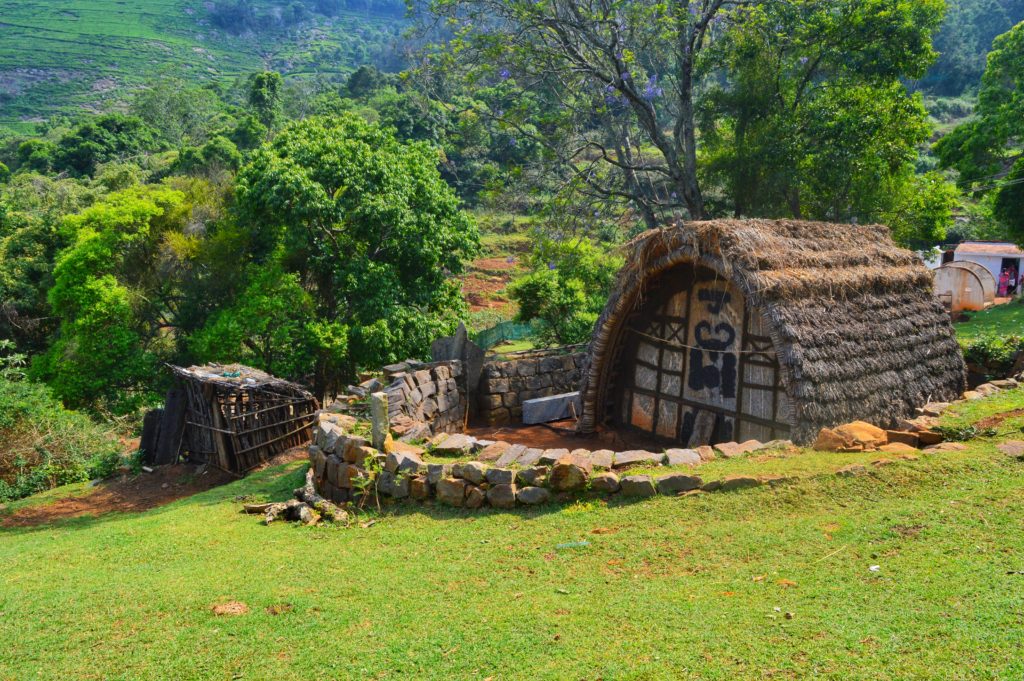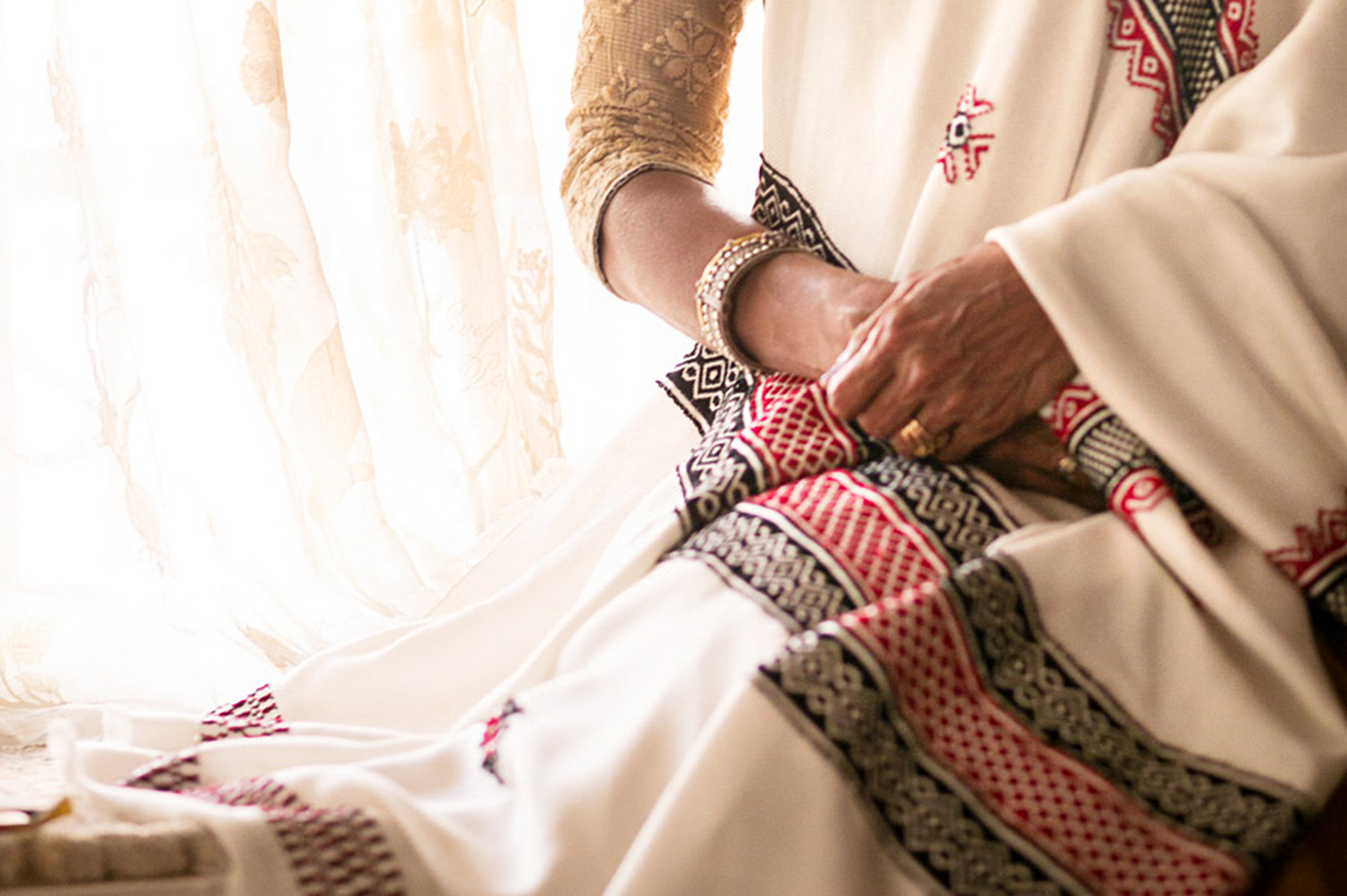Introduction:
For a long time, the Nilgiris has remained a symbol of aestheticism, with the estates of the hills offering a calming retreat and the eco-farms situated amidst picturesque lakes. However, if you pause for a moment and look beyond the aspect of tourism, you see the people of the hills, their culture, struggles, and livelihoods lurking in every hairpin bend of the mountain. The Todas are one such community that lives at the higher altitudes of the mountains, clustered in small hamlets with cottages made of bamboo planks and wood. Once you reach the Toda hamlets, or Munds, as the locals call them, you are welcomed by a serene atmosphere that makes up for all the trotting and climbing, and you get to witness the hills in a tender, softer version, away from all the noise and chaos.

Toda Mund- located in the higher lands of Nilgiris
source: echoes of travel
Culture and History
The Todas are a pastoral community that traditionally follows strict patriarchal norms. In this community, everything from political authority to the ownership of houses, lands, buffaloes, and most other property is primarily held by the menfolk. It is against this background that we see the skills of Toda women flourish. Toda women’s skill in embroidering cloth, for which the community is now so well known, is certainly no recent innovation. This craft, for which the Toda people are widely recognised today, has been passed down through generations and is deeply rooted in collective memory rather than written records. Although many young women now leave their villages to pursue education or work in retail or government jobs, for the majority of Toda women, embroidery continues to be a primary activity carried out within their hamlets.

Poothukuli shawl being embroidered
Source: Times of India
Embroidery
According to Historical sources, the Toda embroidery skill is no recent innovation, However, the first official record we have of the designs and patterns dates back to the early 19th century, which we get from a colonial archive that gives a detailed account of the poothukuli shawl, a signature Toda culture, in detail. The ‘poothukuli’ weaved in red and black threads plays an important role in the lifecycle of the Toda people right from birth, weddings to funerals. For example a newly embroidered shawl is used for the wedding, and the designs and motifs on this are all related to prosperity, fertility, and security. All Toda embroidery is done manually, usually by the women of the community using a reverse darning stitch technique. The embroidery is typically worked on a white background using red and black threads, and sometimes with blue. It is interesting to note that no embroidery frame is used, and the women count the thread with their fingers by merely stretching the base material. What is even more exciting to notice is that the iwomen skilfully embroider patterns with such geometric precision without any external aids like a scale or patterns, or mathematical calculations. Among the many other beautiful aspects of this embroidery, if there is one aspect that truly stands unique and distinguishes it from other embroideries is that it is entirely reversible, and one can use and display both sides.

Toda fabric blended red and white threads
Source: Coonoor and co
Motifs
The buffalo is a central figure in Toda culture; it is not just a pastoral animal but is also worshipped by the Toda people and plays a vital role in their rituals and daily life. The buffalo motif in Toda embroidery represents strength, the sacred bond between the Todas and their environment. “Twehhdr”, meaning “pairs” in the Toda language, is another important motif of the craft. This motif is symmetrical and repetitive, reflecting paired elements that may appear as peaks, ridges, or dual lines, much like mountain ranges. The motif supposedly represents the Toda homeland. “Meettoofy”, is another motif that roughly translates to peacock feathers in the Toda language. The peacock is admired for its beauty and majesty, and its feathers symbolise vision, elegance, and pride. This motif reflects an aesthetic appreciation of the bird and its beauty. Thus Most of the Tod amotifs include nature and their surroundings , shocasing the devotion and loyalty for he landscape they reside in. In addition to natural inspirations, Toda embroidery has also started to include modern items like the wristwatch. This shows the evolving creativity of Toda artisans, who blend traditional designs with contemporary cultural elements.

culmination of various motifs in the Toda attire
source: International Journal of Business Anthropology
Current status
Poothukuli shawls have now become the hallmark of the community. The white and red embroidery tells the tale of the entire history of the hills, its rich flora and fauna, the honeycombs, the trees, and more. But if you have a keen eye and look between the threads, it also tells the story of the woman sitting by the window, gazing at the grass and sewing for most of the day. It tells her story of silent resilience and pride. It tells the history of many generations of women and what they had to go through. In recent years, many big companies have come forward to promote and buy their goods, making these shawls an international commodity. As a result, the market value of these shawls has increased significantly. But we must not forget, it all started with a group of women deciding to come together one day and try to convert their leisure-time activity into an economic opportunity. It is not without its challenges that they engage in this activity, but despite these hardships, these women take great pride in their ability to support themselves financially, viewing their work as a source of independence. Every thread that is sewn into the cloth is seen as an act of micro revolution against the existing structure.

A toda woman donning a puthukuli shawl during a wedding
Source: coonoor and co
Conclusion:
In a nutshell, the Toda fabric, designs, and embroidery are a testimony to their culture, which has been meticulously protected for centuries together under multiple threats of assimilation and oppression. The journey of the Toda women is a perfect example of their endurance and strength. Through their collective efforts, they have not only gained international recognition as artisans but have also become symbols of feminism and empowerment. Their life history is a story of determination and resilience, where the labour of women has made a remarkable difference in both social and personal spheres. As the Toda women continue to promote their culture globally, their journey in challenging the system and traditional norms will continue to inspire many.
And sometimes it all starts with one stitch at a time.

The concentration visible on the faces of Toda women
Source: Village square
References:
https://www.academia.edu/83286025/The_Toda_Womens_Embroidery_Enterprise_The_Commercialization_of_a_Traditional_Craft_in_South_India
Emeneau, M. B. 1958. “Oral Poets of South India: The Todas.” The Journal of American
Folklore 71 (281): 312-24. https://doi.org/10.2307/538564.
Emeneau, M. B. 1974. “Ritual Structure and Language Structure of the Todas.” Transactions
of the American Philosophical Society 64 (6): 1-103. https://doi.org/10.2307/1006327.
The Hindu. 2013. “Time travel with the Todas.” July 6, 2013.
https://www.thehindu.com/features/metroplus/travel/time-travel-with-the-todas/article4
887826.ece.




